- News
- Reviews
- Bikes
- Accessories
- Accessories - misc
- Computer mounts
- Bags
- Bar ends
- Bike bags & cases
- Bottle cages
- Bottles
- Cameras
- Car racks
- Child seats
- Computers
- Glasses
- GPS units
- Helmets
- Lights - front
- Lights - rear
- Lights - sets
- Locks
- Mirrors
- Mudguards
- Racks
- Pumps & CO2 inflators
- Puncture kits
- Reflectives
- Smart watches
- Stands and racks
- Trailers
- Clothing
- Components
- Bar tape & grips
- Bottom brackets
- Brake & gear cables
- Brake & STI levers
- Brake pads & spares
- Brakes
- Cassettes & freewheels
- Chains
- Chainsets & chainrings
- Derailleurs - front
- Derailleurs - rear
- Forks
- Gear levers & shifters
- Groupsets
- Handlebars & extensions
- Headsets
- Hubs
- Inner tubes
- Pedals
- Quick releases & skewers
- Saddles
- Seatposts
- Stems
- Wheels
- Tyres
- Health, fitness and nutrition
- Tools and workshop
- Miscellaneous
- Cross country mountain bikes
- Tubeless valves
- Buyers Guides
- Features
- Forum
- Recommends
- Podcast
feature
Video: Climb the Alpe faster on Zwift! | 7 top tips to go quicker
The Alpe du Zwift is the platform's signature climb. For many people going under an hour is the target, but whatever your goal these seven tips will help you shave seconds, and who knows, maybe minutes, off your time.
Know what’s required
The accepted wisdom of the Alpe du Zwift is that to climb it in under an hour you need to average about 3.2W/kg from the bottom to the top.
The bottom line is: you need to be able to go that hard, for that long. If you’re there or thereabouts, then some of these tips might help to sneak you over the line if you haven’t managed it yet. If you’re not really at that sort of level, or you’re well above it, then clearly the hour mark is just one obvious benchmark. You might be aiming for an hour and a half, or 45 minutes: it doesn’t really matter, much of the advice here remains the same. You’ll need to adjust to your goal, but the first takeaway is to make sure you know what it is you’ll need to do.
This is a really useful graph on ZwiftPower that will give you a good idea of the kind of W/kg numbers you’ll need to sustain for a given time on the climb. There’s a handy formula too that gives a good approximation.
180/(ETA-3.5) = W/kg
It’s pretty simple, really: subtract 3.5 from the number of minutes you’re looking to do the climb in, divide 180 by that number, and that’ll give you your target W/kg. For 45 minutes, it would be 180/41.5, which works out at 4.3W/kg. Easy. The sum, that is, not doing the Alpe at that speed!
Get the right gear
Out in the real world, you wouldn’t bring your TT bike to a hill climb, and the same is true in Zwift: picking the right frameset and wheels is going to shave a significant chunk off your time. Which bikes are available to you will depend on what level you’ve reached in the game, and how much of the in-game currency, drops, you’ve amassed while riding.
If you’ve reached level 6, which is the level at which the Alpe du Zwift is unlocked, then you can buy the Specialized Tarmac SL7, assuming you have enough drops, and on an hour’s climb that will shave about half a minute off your time compared to the stock Zwift carbon frame, all other things being equal. The SL7 is expensive, though, so you might not have enough drops if you’re just starting out. The cheaper Cannondale EVO frame, unlocked at level 9, is a marginally better climber, and a lot cheaper.
In terms of wheels, what you really want is the Lightweight Meilensteins, but the only way to get them is to climb the Alpe and spin the roulette wheel at the top: you can’t buy them, so it’s just down to luck, and a lot of grinding up the climb. They’re worth about 15 seconds over the stock wheels.
For stuff you can actually buy, the ENVE SES 3.4 wheels are available at level 4 and will save you 10 seconds or so. So with the frame and fork together there are three-quarters of a minute of savings available from having the best kit for the job, which is not to be sniffed at. If you’re close to your target, that might get you over the line
Get a proper warm-up
If you’re heading up the Alpe it’s tempting to select the Road to Sky route and just crack straight on with the climb. But anyone that’s done any racing at any level will tell you that you’re definitely not going to be at your best if you’ve had the minimum possible warm-up. For the Alpe climb, you need to be able to make a sustained effort from the first ramp all the way to the top, and for that, you want legs that are fully warmed up.
The Tour of Fire and Ice route is a good option: that starts at the volcano and adds 13km of run-in to the bottom of the Alpe and includes the bottom section of the Epic KOM up to the bridge. Go easy on the flat section to warm yourself up a bit, then have a small dig on the first climb. Go at or just above the kind of pace you’ll need to sustain on the Alpe, then back off across the bridge and down through the jungle. That way you’re properly warmed up but you’ll be nice and fresh by the time you hit the Alpe.
Fuel yourself well
An hour at high intensity is a long enough effort that you need to pay some attention to what you eat, both beforehand and during the ride. There are masses of different strategies out there, and different things work well for different riders, so we’re not going to lay down chapter and verse here. But, do give your energy intake some thought.
Eat something you know works for you a couple of hours before your effort, and don’t over-eat. Something like a gel, or a bar you like, can be a handy pick-me-up on the ride itself. Often it’s a psychological boost as much as it’s anything, but it all helps. Make sure you have enough water to hand, too, and use an electrolyte tab in your bottle if this kind of effort tends to make you cramp up near the end.
Aim for a negative split
Zwift is really good at telling you how your Alpe ascent is going. Down the left-hand side, there’s a list of the hairpin sections and how long each one is. When you’re riding a section, Zwift tells you your average power and heart rate for that section. So, you can keep pretty close tabs on your effort.
Getting to the top of the Alpe in a certain time is essentially a time trial. Ask any pro and they’ll tell you that the most efficient way to ride a time trial is with a negative split: start slower, and finish faster. If you go out too hard and the wheels start to fall off near the top then you can lose big chunks of time, so keep your effort fairly conservative for the first quarter, a few percentage points under where you need to be to hit your target time.
As an example, if you know that you need to average 250W for the whole climb, ride the first quarter trying to hit 240W for each section, then assess how you’re feeling and if the signs are good, step up to your target power for the middle section of the climb and try and ramp things up as you approach the top. This kind of approach is especially useful if you’re riding on your own.
Use trainer difficulty to your advantage
Some people will tell you that you have to do the Alpe on 100% trainer difficulty, or it doesn’t count. There’s only one instance in which that’s true: if you’re doing an Everesting attempt that you want to ratify on the Hells 500 website then the rules stipulate you need to be on the maximum gradient simulation. If you’re not, then ignore everyone else: you can do what you like. You have to put in the same amount of work to get to the top in a given time, no matter what you have the trainer difficulty set to. You can’t cheat your way to the top. Well, you can if you ride an e-bike as we did once.
That’s not to say that all settings are the same, though. One of the settings will be the best one for you, but everyone’s different. If you’re most used to putting out steady-state efforts - say you’ve done some time trialling, or you live and ride somewhere flat - then dialling back the difficulty will make the climb feel more like that sort of an effort. If you prefer to feel and respond to every change in gradient, and you like to mix it up in and out of the saddle, then a higher trainer difficulty will probably work much better for you.
Ride it in a race, or with your most competitive friends
And lastly: get some competition! There’s no doubt about it: trying to hang on to someone that’s marginally faster than you is a great way of improving your time up the Alpe. There are always loads of people doing the climb, so you might think that you can just find someone as you’re riding to do battle with. In reality, it doesn’t usually work like that. People coming past you are generally going quite a bit faster than you, so attempting to latch on to their coat tails normally ends in tragedy a bit further up the climb.
It’s much better to start with someone who you know will test you on the climb. If you have a friend who is capable of riding the Alpe a bit quicker than you, suggest a meetup and try and stay on their wheel. It can still be a bit hit-and-miss, and again you risk blowing up if you’re trying to sustain a pace too far above what you’re capable of. It’s a fine balance.
Another and often better option is a race: find one that’s doing the Alpe and go for it. By the time you’re puffing up the lower slopes, the race will have splintered and with any luck, you’ll be left with a bunch of riders that are about the same ability as you. Then you can egg each other on all the way to the top. There’s nothing like the fear of losing 39th place to some random stranger from the other side of the world to make you put in everything you’ve got on that last drag to the arch!
So there you go, those are our seven top tips for getting faster on the Alpe du Zwift! Do let us know your tips in the comments too! Hopefully, these tips will help you knock a bit of time off your personal best. Speaking of PBs, what is yours on Alpe du Zwift? Let us know below.
Latest Comments
- mdavidford 2 min 28 sec ago
Quite right - get those soapboxes off our roads. As everyone knows, the right place for them is the internet.
- Bungle_52 5 min 43 sec ago
It's finally live. Here is the link :...
- mctrials23 6 min 45 sec ago
I sometimes feel like I am mad. Do they genuinely believe this sentencing is a deterrent. The driving standards in Ireland are a fucking joke and...
- David9694 7 min 3 sec ago
First warm and sunny weekend for the New Forest
- Steve K 10 min 31 sec ago
Have a search through the reviews. Plenty of bikes in that sort of price range, including ti ones (mine cost me about £2.5k nearly four years ago,...
- Rendel Harris 1 hour 10 min ago
The Michelin Power Gravel Adventure might fit your requirements, or the Vittoria Terreno Zero ("tubeless ready" but no reason you couldn't run it...
- hawkinspeter 1 hour 5 min ago
Council showing 'utter disregard' for people against Liveable Neighbourhood scheme:...
- hawkinspeter 1 hour 23 min ago
Better in some places and worse in others. There's still pletny of gridlock going on. I want them to bring back the rickety flyover by Temple Meads...
- lawrence18uk 11 hours 4 min ago
" in what appears to be two random, completely unprovoked attacks."...
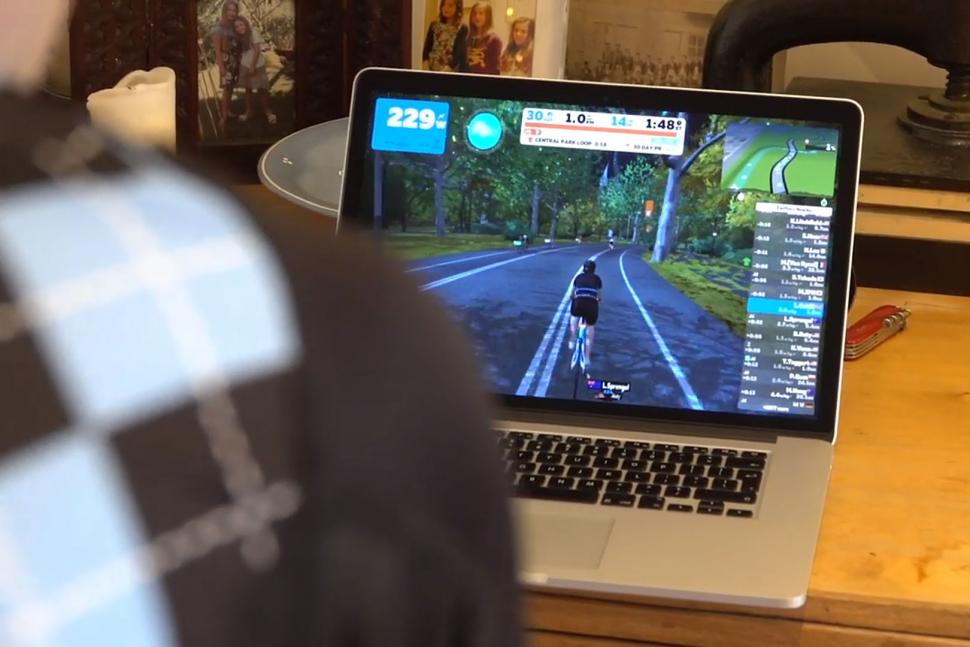
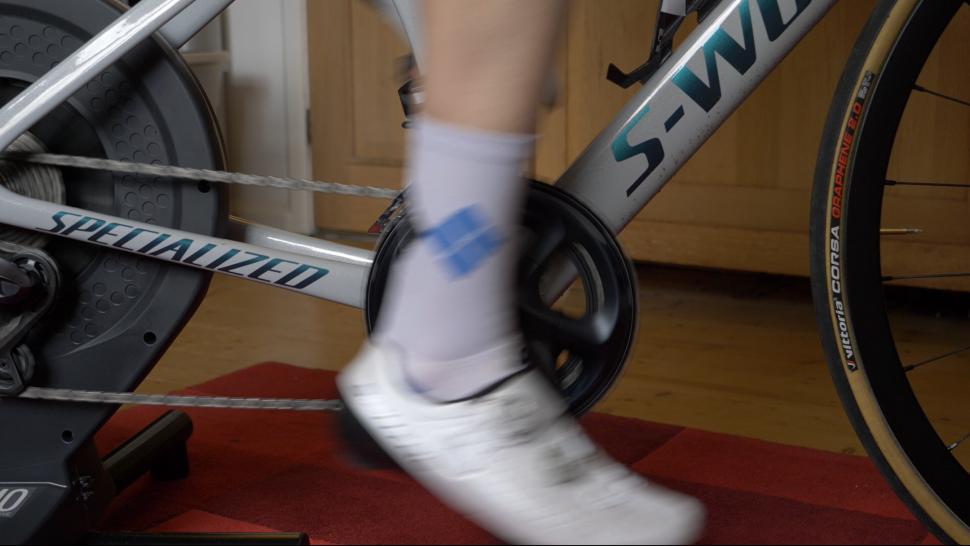
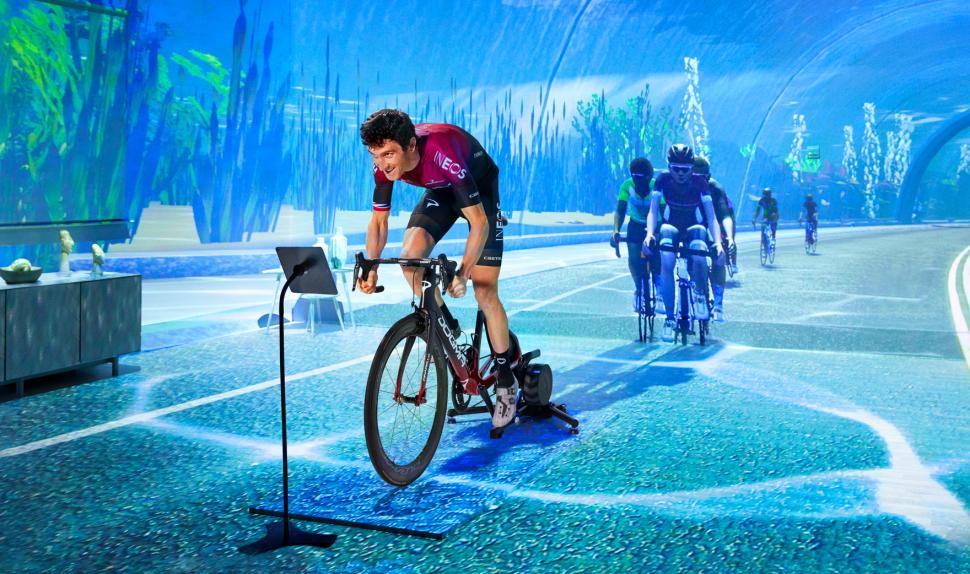

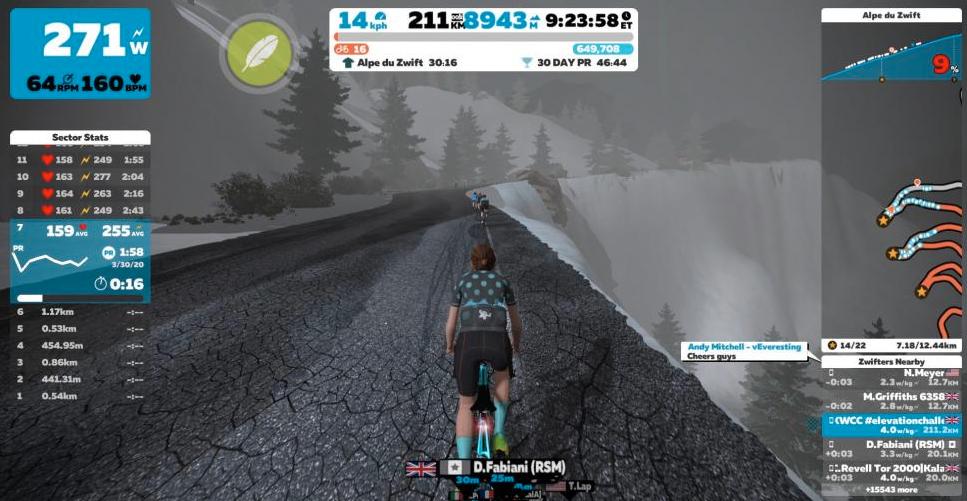

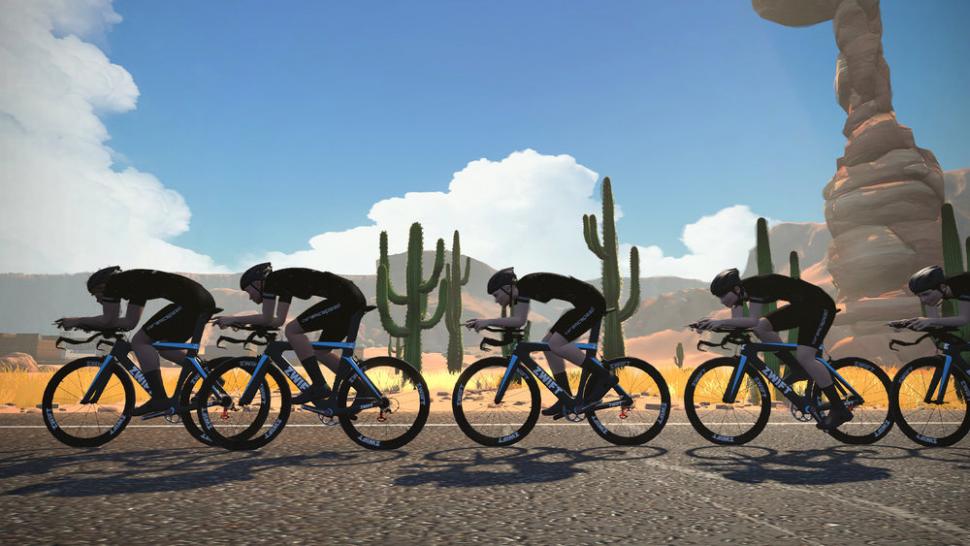
Add new comment
6 comments
Its worth noting that the Alpe is now not the highest climb since the France / Mt Ventoux World was introduced for the vTDF last year which is >400m higher (1.5km of pure up). But is it still the most "gamified" due to the timings/HR/Power on each individual corner, which Ventoux lacks and needs IMO.
Be aware that there another 750m drag after the last corner countdown that can be a bid demoralising if you have become tunnel visioned in ticking off the corners, and your effort is waning due to overcooking earlier on.
Its definately worth looking for a race or event to do the route with. I did it recently on the Tour De Zwift - which is an event rather than a race - but it doesnt stop people going at it as hard as they can and you should get a nice groupetto forming around your sweetspot pace. Also on a bigger event there is alway someone going slower than you which I fine a nice psycological boost. Obviously I blank out on the fact that people are also overtaking me
Its also worth noting that due to the length its a very good way to score new 20min and 1hr power records if you are looking to test/verify your current FTP outside of the official Ramp and FTP test workouts.
I managed sub 1hr hour 2 weeks ago. Still feeling chuffed from it. Now if only there was an equivalent for Ventoux.
gotta go under 1h30 for the ventoux
I tried the negative split... but probably started out too ambitiously vs my FTP and had nothing else to give!
Thanks for the link to the W/kg vs time chart- very helpful.
58 minutes here and I have absolutely no desire to try and beat it!
^^ This. Absolutely this ... but I do so want those lightweight wheels!
Me too... But can you imagine doing it again and ending up with yet another pair of gloves?!